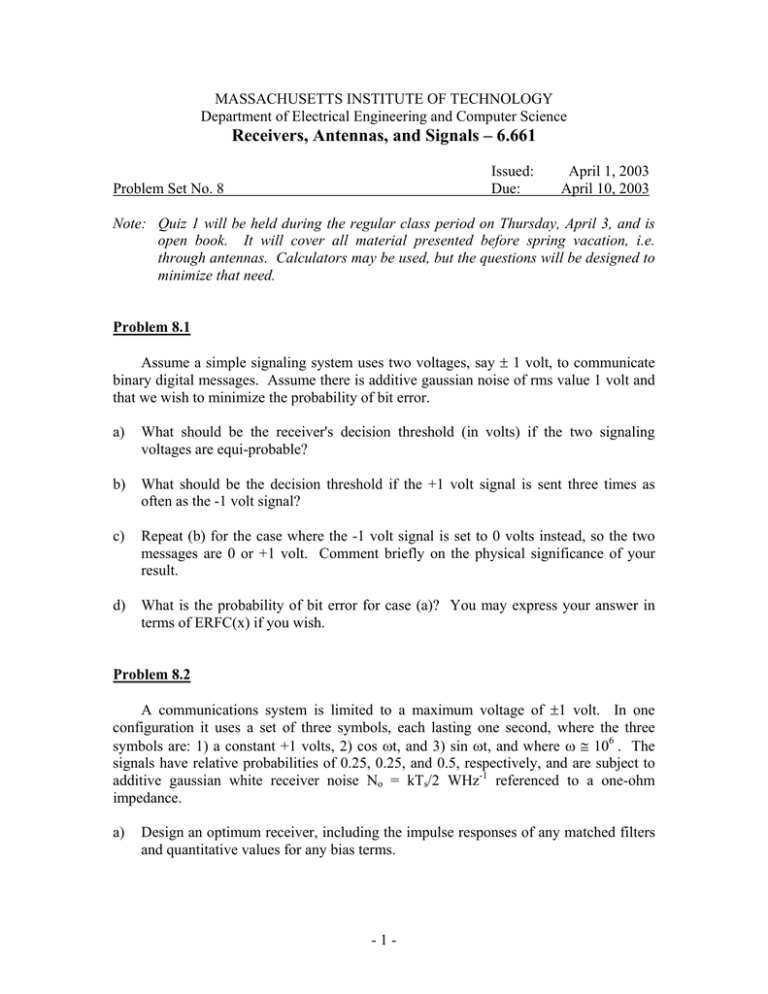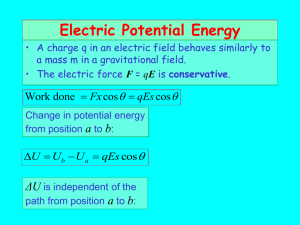Receivers, Antennas, and Signals – 6.661
advertisement

MASSACHUSETTS INSTITUTE OF TECHNOLOGY Department of Electrical Engineering and Computer Science Receivers, Antennas, and Signals – 6.661 Issued: Due: Problem Set No. 8 April 1, 2003 April 10, 2003 Note: Quiz 1 will be held during the regular class period on Thursday, April 3, and is open book. It will cover all material presented before spring vacation, i.e. through antennas. Calculators may be used, but the questions will be designed to minimize that need. Problem 8.1 Assume a simple signaling system uses two voltages, say ± 1 volt, to communicate binary digital messages. Assume there is additive gaussian noise of rms value 1 volt and that we wish to minimize the probability of bit error. a) What should be the receiver's decision threshold (in volts) if the two signaling voltages are equi-probable? b) What should be the decision threshold if the +1 volt signal is sent three times as often as the -1 volt signal? c) Repeat (b) for the case where the -1 volt signal is set to 0 volts instead, so the two messages are 0 or +1 volt. Comment briefly on the physical significance of your result. d) What is the probability of bit error for case (a)? You may express your answer in terms of ERFC(x) if you wish. Problem 8.2 A communications system is limited to a maximum voltage of ±1 volt. In one configuration it uses a set of three symbols, each lasting one second, where the three symbols are: 1) a constant +1 volts, 2) cos ωt, and 3) sin ωt, and where ω ≅ 106 . The signals have relative probabilities of 0.25, 0.25, and 0.5, respectively, and are subject to additive gaussian white receiver noise No = kTs/2 WHz-1 referenced to a one-ohm impedance. a) Design an optimum receiver, including the impulse responses of any matched filters and quantitative values for any bias terms. - 1 - b) Design an alternate symbol set vi(t), i = 1,2,3 that would be more efficient, but subject to the same 1-volt limit. Note, many optimum sets exist and simplicity is preferred; since a true optimum that accounts for the differences in a priori probabilities may be elusive, a qualitative derivation would suffice. Briefly explain your reasoning. Problem 8.3 A certain receiver has a noise temperature of 100K and is to yield one bit per second output for BPSK with a probability of bit error of 10-4. See Figure 4.4-3 in the text. a) What received power [W] is required? b) For this system, how many Joules/bit are required? Is this result a function of the chosen data rate? - 2 -











